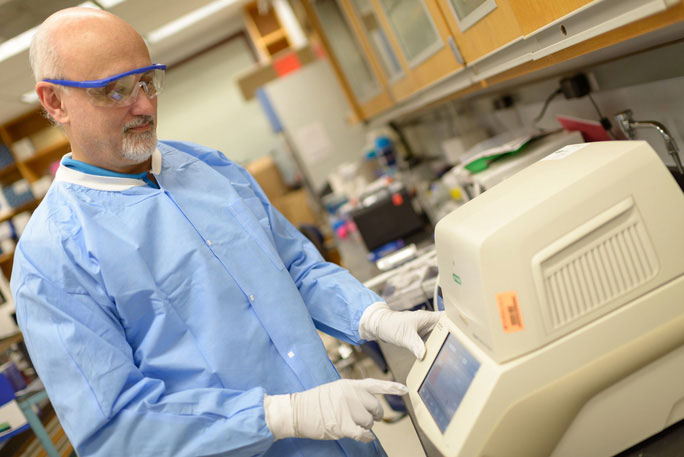A new coronavirus strain potentially originating from dogs has been found to infect humans in Malaysia and Haiti.
According to NPR on November 5, a group of healthcare workers, including doctors, nurses, and volunteers, returned to Florida, USA, after participating in a volunteer mission at a clinic in Haiti in early 2017. Shortly after their return, the group of 20 healthcare workers began to feel unwell.
Virologist John Lednicky from the University of Florida stated, “They had mild fevers but were not seriously ill.”
At that time, the Zika virus was spreading in Haiti. U.S. health officials were concerned that the healthcare workers might have contracted the Zika virus and brought the pathogen back to Florida. They collected urine samples from each healthcare worker and asked Lednicky to determine the presence of the Zika virus.

Virologist John Lednicky from the University of Florida. (Photo: UFHealth).
Lednicky conducted PCR testing, and the results showed that all tested negative for the Zika virus. However, he suspected that the urine samples contained another type of virus, so he took urine samples from six individuals in the group to culture in monkey cells, aiming to see if they could replicate and grow to detectable levels.
“This is what we do in the lab. We cast a wide net, trying to isolate the virus. Sometimes, surprises happen,” Lednicky said.
And a surprise did occur. Lednicky found a new coronavirus strain that many scientists believe could be a novel pathogen infecting humans – an eighth type of coronavirus.

Researchers at Duke University and Ohio State University named the “dog virus” CCoV-HuPn-2018. (Photo: Business Today)
The new coronavirus likely originates from dogs and appears to cause pneumonia in children. In May, scientists at Duke University announced they had discovered a coronavirus similar to the one found in Haiti in children at a hospital in Malaysia.
Researchers found the virus in the respiratory tracts of 3% of the 301 patients tested in 2017 and 2018. The genetic sequence of this virus from Malaysia indicates it likely originated from dogs, according to virologist Anastasia Vlasova.
Lednicky and his colleagues also discovered that the genetic sequence of the virus in Haiti was 99.4% similar to the virus in Malaysia. This finding was published in the journal Clinical Infectious Diseases last weekend.
While these findings may seem alarming, researchers have no evidence that this new coronavirus can spread between humans or cause a global outbreak.
A major question arises as to why the “dog virus” in Malaysia could cause illness in the group of healthcare workers in Haiti. The virus may be spreading, but how it spreads remains a mystery.
Lednicky believes the new coronavirus could be widely present, yet no one is paying attention to it. This virologist suspects it is everywhere, spreading to those who come into contact with dogs or people who have developed immunity to it through exposure to similar viruses.

The new coronavirus likely originates from dogs. (Photo: KTVU).
Some scientists suggest that doctors and researchers should actively search for this virus in patients. “I think this is important for several reasons. First, this virus is linked to some cases of pneumonia in children. Second, we do not know if it can transmit from person to person,” said virologist Linda Saif from Ohio State University.
Saif added that in reality, scientists found nearly identical viruses in both Haiti and Malaysia while confirming that it does not spread between people.
To explain how the virus in Malaysia could cause illness in the group of healthcare workers in Haiti, Saif proposed two hypotheses: either a nearly identical virus in dogs spread to humans in both countries in the same year; or the virus is present in humans – at low levels – in many places around the world without being detected.
Meanwhile, epidemiologist Jonna Mazet from the University of California commented that the discovery of the “dog virus” is actually good news because it gives scientists time to study, create diagnostic tools, and understand what it may cause to prevent it in a timely manner.


















































